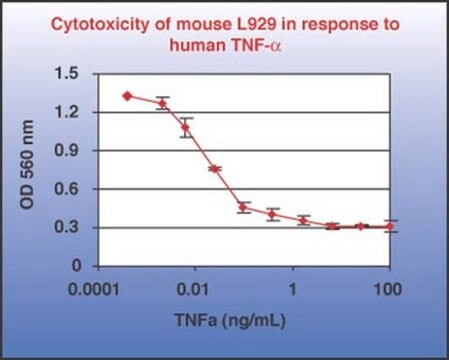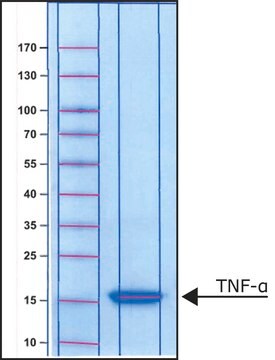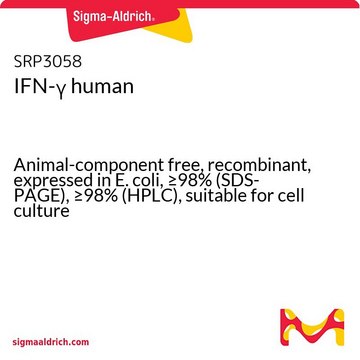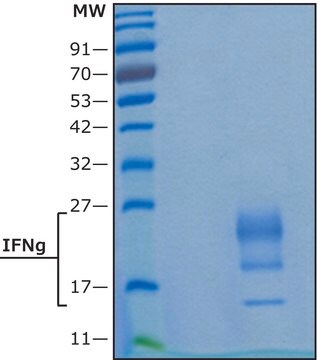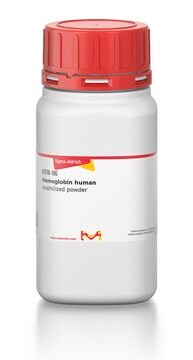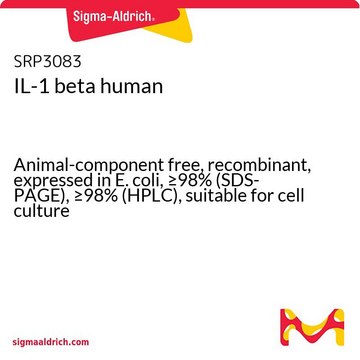T0157
Tumor Necrosis Factor-α human
TNF-α, recombinant, expressed in yeast, buffered aqueous solution, suitable for cell culture
Synonym(s):
hTNF-α, TNF-α
About This Item
Recommended Products
biological source
human
recombinant
expressed in yeast
Assay
≥95% (SDS-PAGE)
form
buffered aqueous solution
potency
>1x108 units/mg ED50
quality
endotoxin tested
specific activity
≥2 × 107 U/mg
mol wt
~17.4 kDa
packaging
pkg of 10 μg
storage condition
avoid repeated freeze/thaw cycles
concentration
0.1-10 mg/mL
technique(s)
cell culture | mammalian: suitable
impurities
<10 EU/mLtested (LAL test)
color
colorless
UniProt accession no.
shipped in
dry ice
storage temp.
−20°C
Gene Information
human ... TNF(7124)
Looking for similar products? Visit Product Comparison Guide
General description
Application
Biochem/physiol Actions
Physical form
Analysis Note
Storage Class Code
12 - Non Combustible Liquids
WGK
WGK 3
Flash Point(F)
Not applicable
Flash Point(C)
Not applicable
Personal Protective Equipment
Certificates of Analysis (COA)
Search for Certificates of Analysis (COA) by entering the products Lot/Batch Number. Lot and Batch Numbers can be found on a product’s label following the words ‘Lot’ or ‘Batch’.
Already Own This Product?
Find documentation for the products that you have recently purchased in the Document Library.
Customers Also Viewed
Our team of scientists has experience in all areas of research including Life Science, Material Science, Chemical Synthesis, Chromatography, Analytical and many others.
Contact Technical Service

